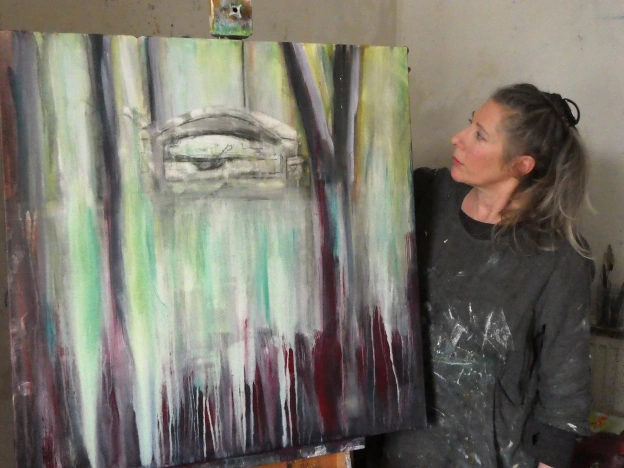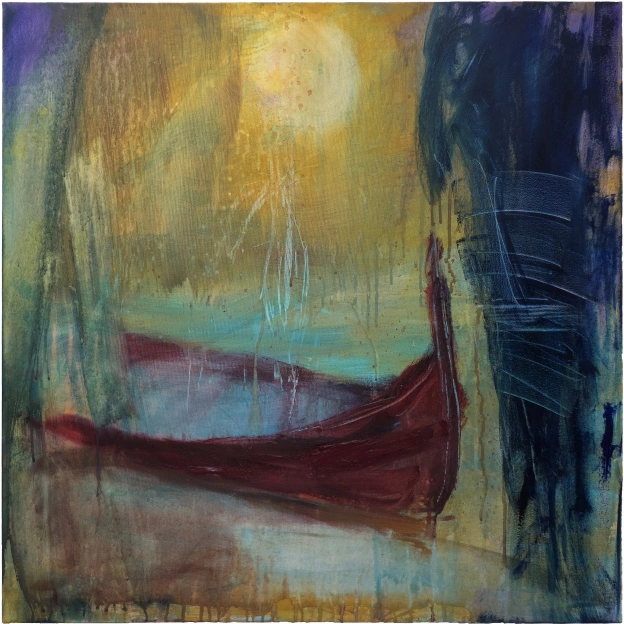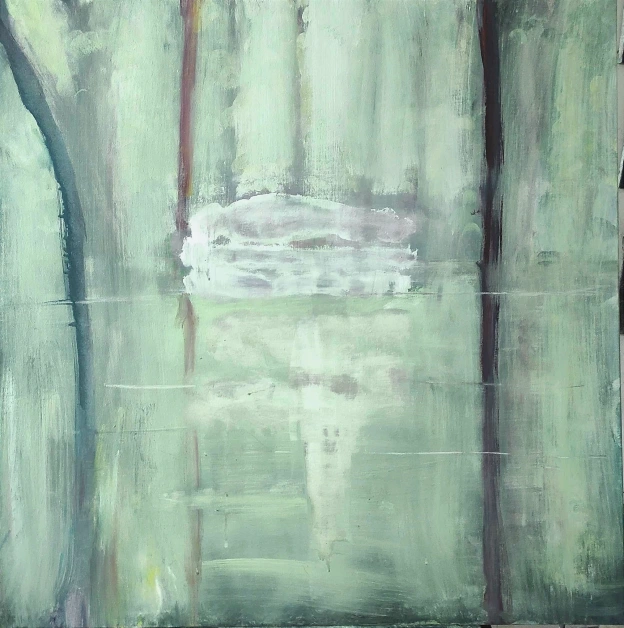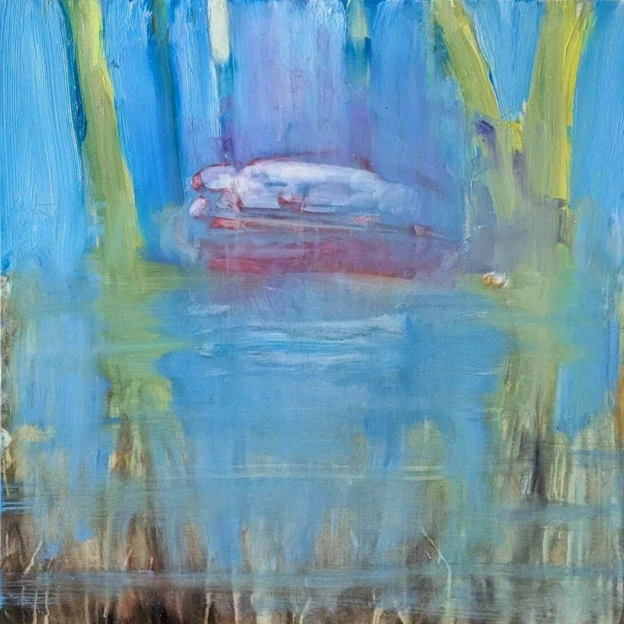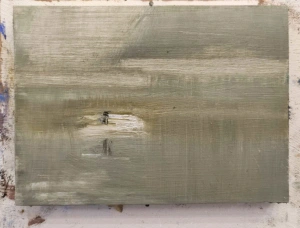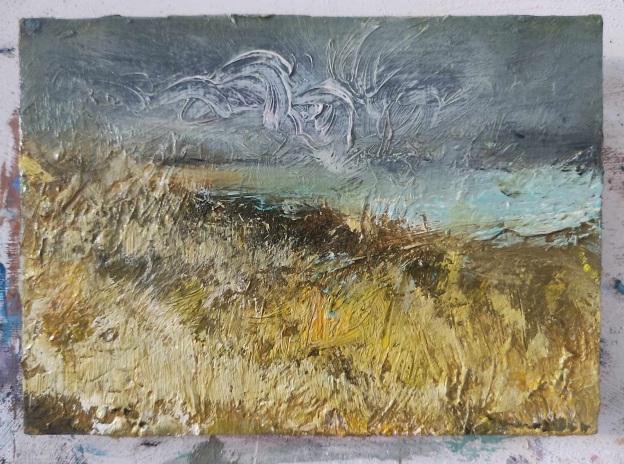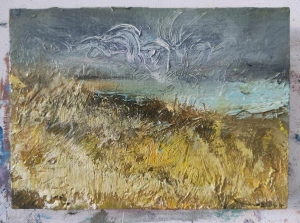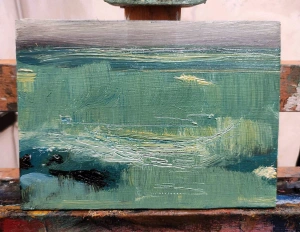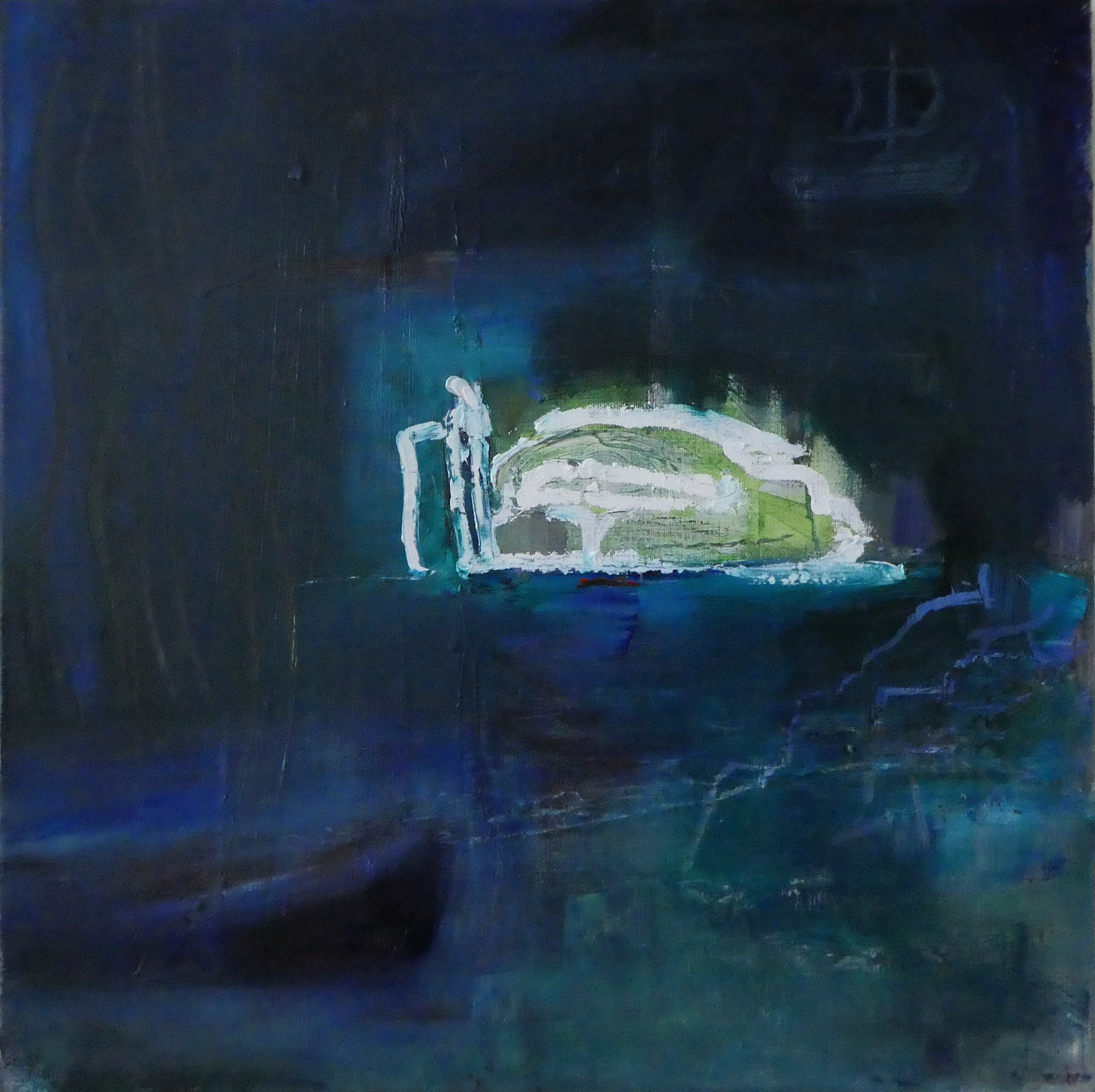Above Return. Acrylic on 31.5×31.5 ” canvas. Rose Strang 2024
Photo below to show scale …
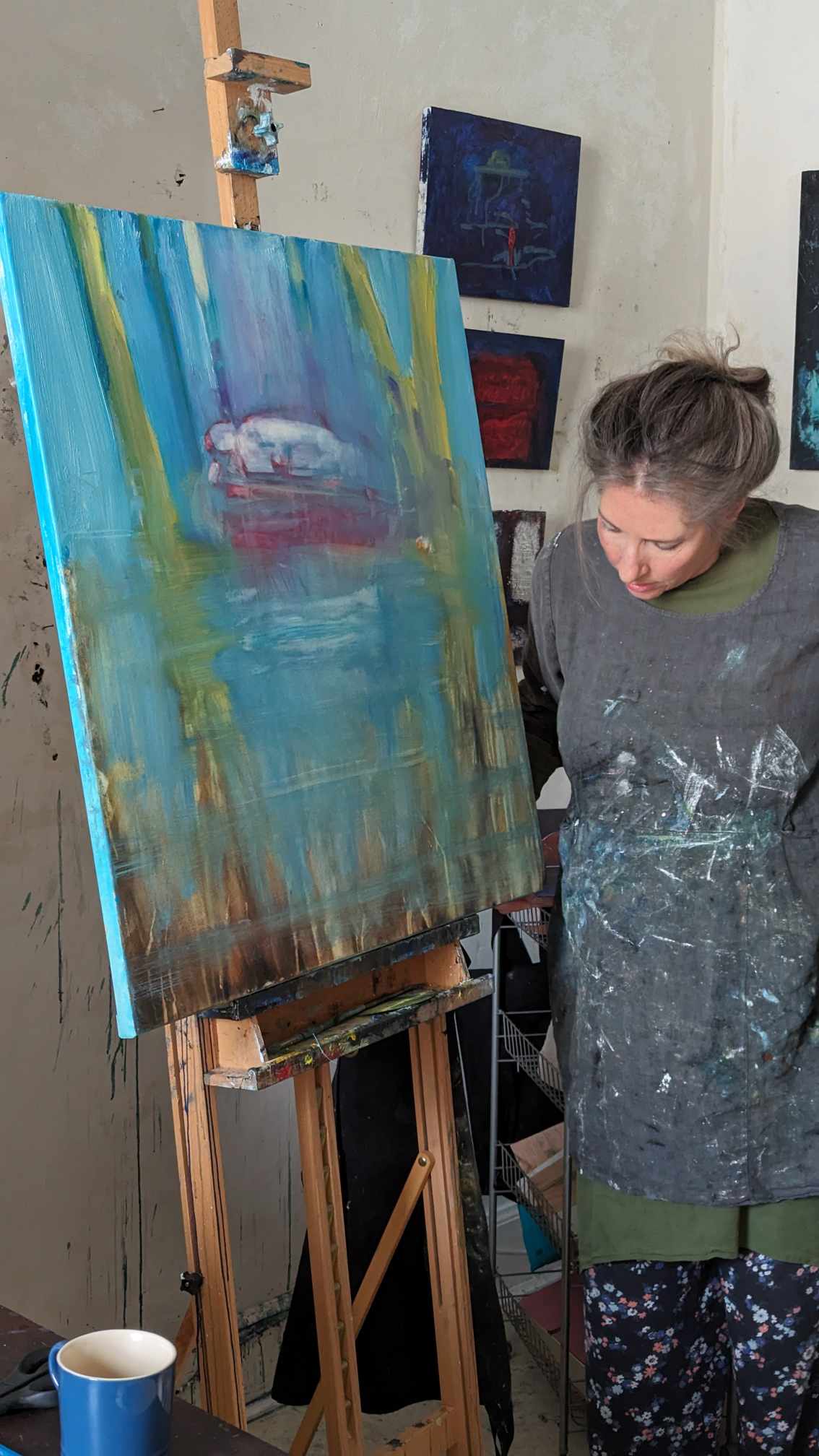
Moving on to larger canvas today, I’m feeling happy with the direction this series is taking.
I was calling this the ‘crusader’s tomb’ series but I feel that the title ‘Return’ has more resonance and is less restricting somehow, though I am inspired by the crusader’s tomb and effigy near Aberlady.
Recently I’ve felt that I’m truly finding my way as an artist after decades of exploring, and it’s good to discover that I have a theme to which I return again and again, which is – the traces of past cultures on landscape. A few days ago I finished reading a book called ‘Elixir‘ by the Bulgarian author Kapka Kassabova (who now lives in Inverness-shire, Scotland). In the book she describes her return to the Mesta valley in Bulgaria and her growing awareness of its layers of history:
But it’s all still here, the house whispered, this is not the end. They wanted me to know this. What you think is here is only the surface view of something deeper that runs through us like electricity through the air, the house wanted me to know. Beams that in a flash illuminate the valley and its breathing creatures. Then darkness again.
I’m far from alone in my feeling that these voices, memories and traces of the past are profoundly important – and that we’re only partially aware of what’s at stake. I’m not talking about climate change as such, but in particular our relationship with landscape and each other.
It’s interesting to speculate on what David de Lindsey might say if he could speak to us. He was desparate for his remains to be returned to the landscape he loved, and his direct descendants honoured his dying wishes – money was left not just for the founding of a Carmelite Friary at Aberlady, but also for the community it served – their livelihood and landscape. Is it this energy I sense when standing in the ruins of the Friary? Probably it’s just imagination, but then what is imagination for?
In my next blog I want to share information about the destruction of beautiful areas of the Scottish Highlands, including parts of Beauly in Inverness-Shire. Right next door in fact to the Kilmorack Gallery where I’ve been showing my three works from the Trace series as part of the Borrowed Land exhibition, which incidentally closes on the 2nd March, so go and have a look while you can!

